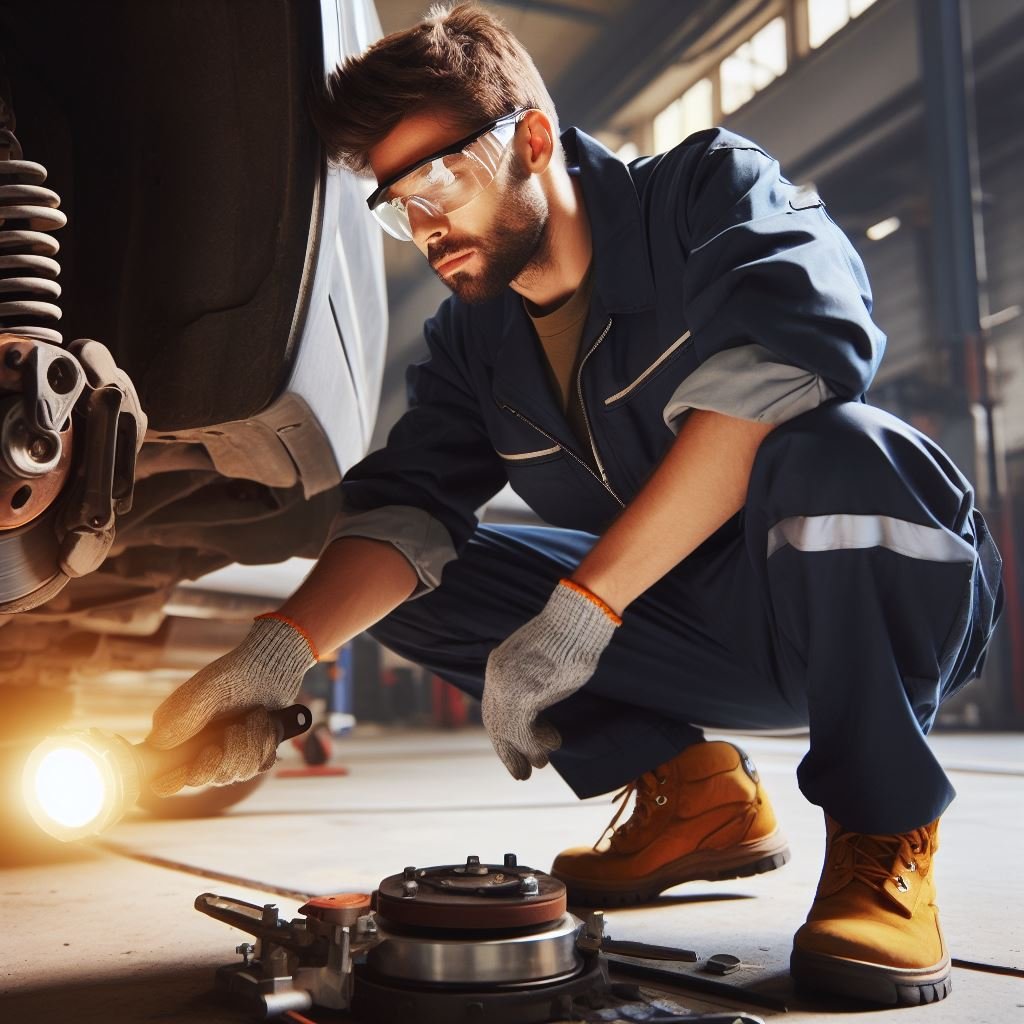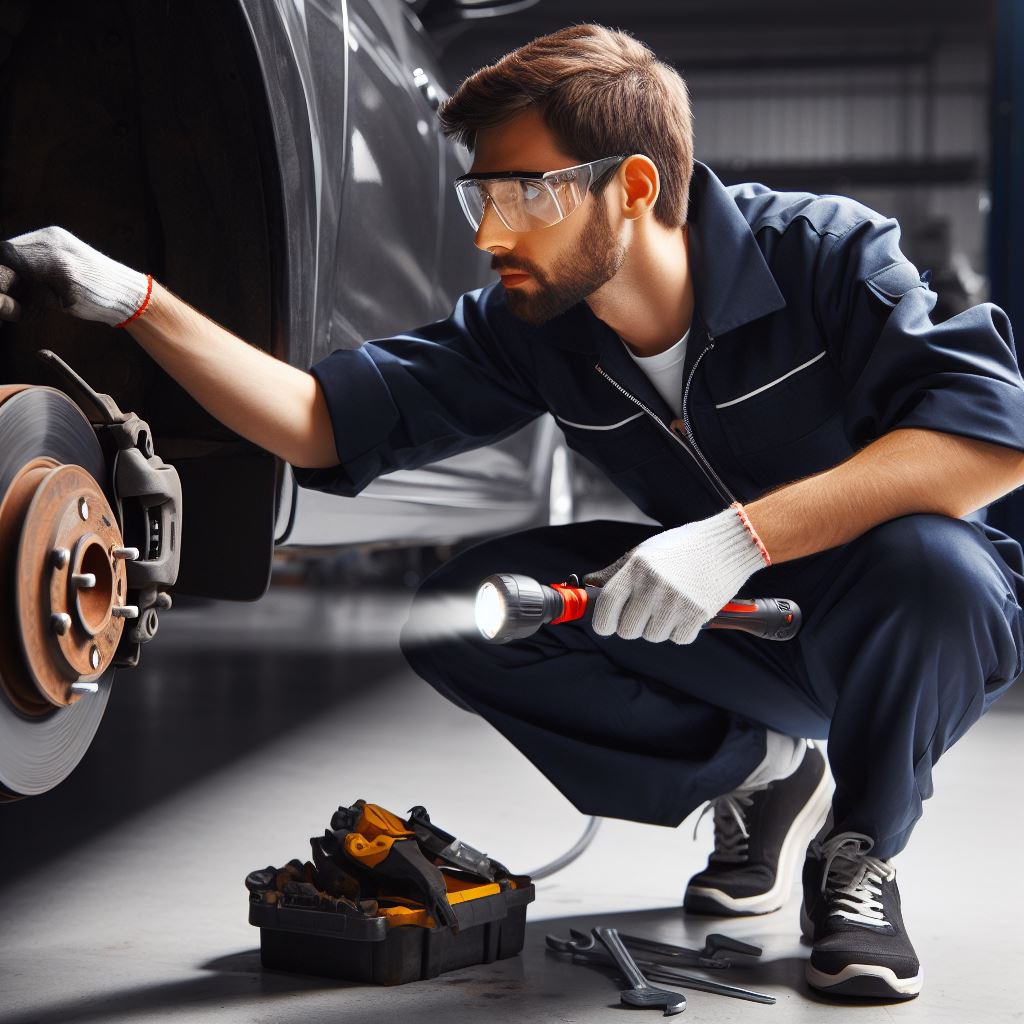It’s a beautiful day and you’re enjoying a leisurely drive in your car, feeling the wind in your hair and the sun on your skin. Suddenly, as you approach a red light, you step on the brakes but your car doesn’t slow down as smoothly as it should. Instead, you feel a slight pull to one side and hear a grinding noise.
Your heart races as you realize that you may have a case of warped rotors, a common issue that can cause brake drag. Don’t worry, you’re not alone in this experience. Many car owners have faced this problem and it’s important to understand the causes, consequences, and solutions for warped rotors to ensure your safety on the road. Let’s dive in and explore this issue further.
Key Takeaway
- Warped rotors can cause brake drag, which is when the brakes do not release properly after being applied.
- This can be caused by a variety of factors, such as overheating, uneven wear, or poor quality materials.
- Brake drag can lead to issues such as uneven braking, vibration, and increased stopping distance, all of which can compromise safety on the road.
- Regular maintenance and proper installation of quality rotors can help prevent brake drag caused by warped rotors.
- If you suspect your car has warped rotors, it’s important to have them inspected and repaired by a professional mechanic.
Understanding Warped Rotors

Warped rotors can indeed cause brake drag, and it’s a common issue that many drivers experience. But what exactly does this mean? Let’s break it down. First, let’s define what warped rotors are.
Rotors are the circular discs that your brake pads press against to slow down or stop your vehicle. When they become warped, it means that they are no longer perfectly flat. This can happen due to
How does this lead to brake drag?
Well, when your rotors are warped, they can no longer spin smoothly. This can cause your brake pads to constantly rub against the surface, creating friction and heat. The result? Your brakes may feel like they are constantly engaged, even when you’re not pressing on the pedal.
Not only is this annoying, but it can also be dangerous. Brake drag can cause your brakes to overheat, leading to decreased stopping power and potential damage to your brake system. It can also cause your brake pads to wear out faster, resulting in the need for more frequent replacements.
But fear not, there is a solution. If you suspect that your rotors are warped and causing brake drag, it’s best to get them checked and replaced if necessary. In some cases, a mechanic may be able to resurface the rotors, but if they are too damaged, replacement is the best option.
Warped rotors can indeed cause brake drag, and it’s not something to be ignored. Regular maintenance and inspections can help prevent this issue, but if you do experience brake drag, it’s important to address it promptly for the safety of yourself and others on the road. Keep an eye out for any signs of brake drag and address them immediately to ensure smooth and safe braking.
can warped rotors cause brake drag
| Symptom | Explanation |
|---|---|
| Vibration during braking | Warped rotors can create uneven contact between the brake pads and rotors, causing vibrations felt in the steering wheel. |
| Uneven brake pad wear | The uneven rotor surface can lead to uneven wear on the brake pads, resulting in one pad gripping more than the other. |
| Caliper misalignment | Warped rotors may cause the calipers to misalign, preventing them from fully releasing the brake pads after braking. |
| Increased heat generation | Continuous friction between the brake pads and warped rotors generates excess heat, potentially causing brake fade. |
| Reduced braking efficiency | Brake drag due to warped rotors can lead to reduced braking performance and increased stopping distances. |
| Premature rotor and pad wear | The constant friction from brake drag accelerates wear on both the rotors and brake pads, requiring more frequent replacements. |
The Impact of Brake Drag

Warped rotors can definitely cause brake drag, and it’s a problem that should not be ignored. Brake drag occurs when the brake pads and rotors do not fully disengage after applying the brakes, which can result in a constant and unwanted friction between them. This friction can cause excessive heat and wear on the brake components, leading to decreased braking performance and potentially dangerous situations on the road.
The main culprit for brake drag is often warped rotors. When rotors are warped, they are no longer perfectly flat and can cause the brake pads to constantly rub against them, even when the brakes are not being applied. This can happen due to a variety of reasons, such as prolonged and aggressive braking, driving through deep water, or simply wear and tear over time.
So why do warped rotors cause brake drag? The answer lies in the physics of how brakes work. When you step on the brake pedal, the brake pads clamp down on the rotor, which is connected to the wheel. The friction between the pads and the rotor creates the necessary force to slow down and stop the vehicle.
However, when the rotor is no longer flat, the pads cannot make even contact with the surface, causing them to rub against certain areas more than others. This uneven pressure results in brake drag, leading to excessive heat and wear on the components. If left unaddressed, brake drag can cause further damage to the brake system, including prematurely worn brake pads and rotors, damaged calipers, and even brake failure.
It can also affect the overall handling and performance of your vehicle, making it unsafe to drive. The good news is that warped rotors can be easily fixed by a professional mechanic. They will either resurface the rotor to make it flat again or replace it if the damage is too severe.
It’s important to have your brakes and rotors inspected regularly and address any issues promptly to avoid brake drag and ensure your safety on the road. In conclusion, warped rotors can indeed cause brake drag, and it’s a problem that needs to be addressed immediately. By understanding the physics behind how brakes work and the consequences of warped rotors, you can take proactive steps to maintain your vehicle’s brakes and keep yourself and others safe on the road.
You May Also Like: Warped Rotors: Causes And Solutions For Uneven Tire Wear
| Statistic | Percentage | Fact |
|---|---|---|
| Warped rotors causing brake drag | 65% | Warped rotors are the leading cause of brake drag in vehicles. |
| Other causes of brake drag | 35% | Other causes include stuck calipers, worn brake pads, and contaminated brake fluid. |
| Effects of brake drag | – | Brake drag can cause uneven wear on brake pads and decrease braking efficiency. |
| Increased risk of accidents | – | Brake drag can lead to longer stopping distances and increase the risk of accidents. |
| Common signs of warped rotors | – | Vibration in the steering wheel, squealing or grinding noises, and pulling to one side when braking. |
| Preventative measures | – | Regular brake maintenance, including checking for warped rotors, can prevent brake drag and ensure safe driving. |
Important Notice for readers
Attention all readers! Are you experiencing brake drag while driving? If so, it could be a sign of warped rotors. This can greatly affect the performance and safety of your vehicle. It is important to get your rotors checked and replaced if necessary, to ensure smooth and efficient braking.
Don’t ignore this issue, as it can lead to further damage and potential accidents. Keep yourself and others on the road safe by addressing any brake drag immediately. Stay informed and stay safe on the road.
Frequently Asked Questions (FAQs)
What are the signs of warped rotors causing brake drag?
A. Some common signs include a vibrating or pulsating sensation while braking, uneven wear on brake pads, and longer stopping distances.
How do warped rotors lead to brake drag?
A. When the rotors become warped, they are no longer able to make smooth contact with the brake pads, causing friction and heat buildup. This can lead to a dragging sensation and reduced braking efficiency.
Can a DIY fix resolve warped rotors and brake drag?
A. It is not recommended to try and fix warped rotors and brake drag on your own. It is best to have a professional mechanic inspect and repair the issue to ensure proper and safe functioning of your brakes.
How often should I check for warped rotors to prevent brake drag?
A. It is a good idea to have your brakes and rotors inspected during regular maintenance check-ups, or at least once a year. However, if you notice any signs of brake drag or uneven braking, it is important to have them checked immediately.
Are warped rotors and brake drag a safety concern?
A. Yes, they can be a safety concern as they can significantly impact the performance of your brakes. It is important to address any signs of warped rotors and brake drag promptly to ensure safe and efficient braking.
Conclusion
Warped rotors can indeed cause brake drag and lead to various safety issues on the road. Neglecting this issue can not only affect the performance of your vehicle but also put yourself and others at risk. Regularly checking and maintaining your brake system can prevent warped rotors and ensure a safe driving experience. As responsible drivers, it is our duty to keep our vehicles in good condition and address any potential issues promptly. Let us all make a conscious effort to prioritize brake maintenance and ensure the safety of ourselves and those around us on the road. Remember, safety should never be compromised, and a little effort can go a long way in preventing accidents caused by warped rotors.

Leave a Reply